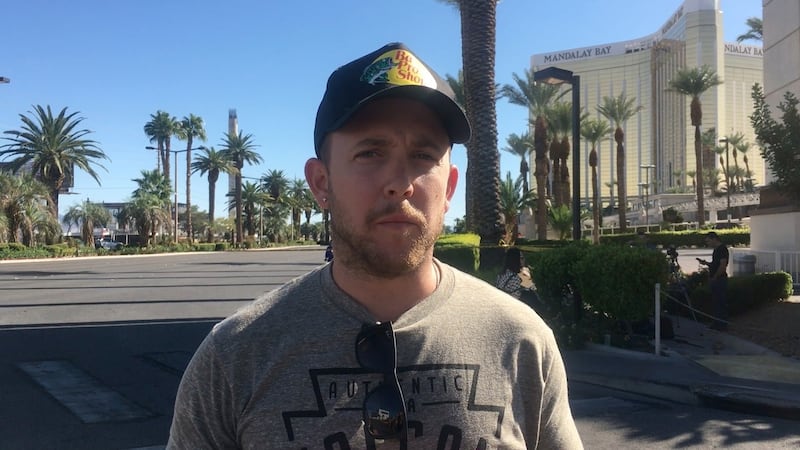Anthony Luca was one of the lucky ones. The 30-year-old Las Vegas native was watching country music star Jason Aldean take the stage at the Harvest 91 music festival when he heard the shots ring out. "The first couple of shots were like teaser shots, and then the shooting started. I saw people getting hit near the front right hand of the stage go down. Everyone started screaming and running."
He and his friends ran into one of the Coca-Cola VIP suites in the venue and lay on the ground, listening to bullets hitting the sides of the metal building. “I said to my friend, ‘We’ve got to keep moving,’” he recalls. They ran towards the exit and hit a fence where some people were climbing, clambering to get out, he says. “All of a sudden, there were hundreds of people, and the fence just toppled over. Then it was like letting cattle out. Everyone was running like crazy, thousands of people – they would run five or 10 yards and then take cover behind a car or a bollard. I’d never heard a gun like that before, it just kept going and going.”
Though Luca is lucky to be alive, many were not so fortunate.
Las Vegas’s University Medical Center is the only hospital with a level-one trauma centre in the state, meaning that it has a full team of surgeons and trauma nurses on site at all times. It admitted most of the dying and injured on Sunday night as they fled to emergency centres from the concert venue. Some of the wounded arrived in private vehicles having been helped by passersby who found themselves caught up in the chaos.
By Tuesday at least 12 people remained in a critical condition in the hospital.
Life-altering injuries
While many of the victims of Sunday night’s gun rampage are likely to be left with life-altering injuries, the psychological scars left by the Mandalay Bay attack will also take time to heal.
Eyewitnesses reported seeing people being shot and falling in front of them as they desperately tried to escape the chaos on the Las Vegas Strip on Sunday.
MGM, the entertainment group which owns the Mandalay Bay Hotel and the venue where the country music festival took place, set up crisis centres in its hotels across the city, offering counselling to guests and staff who were affected by the events.

The University of Nevada and the Clark County School District put on extra counselling support services for students who may have been affected by the attacks.
Across the community, people were trying to make sense of a tragedy that transformed Las Vegas, the symbol of American fun and joie de vivre, into a crime scene.
The fact that it was an American citizen with no known links to international terrorism was in ways particularly alarming. As Patrick Hughes, a Dublin man who runs the Fremont pedestrian area in the city, pointed out, the possibility of a terrorist threat was always to the forefront of many people's minds in Las Vegas.
Visitor safety
Islamic State had previously threatened to target the Las Vegas strip in propaganda videos. As someone with responsibility for visitor safety, he was well aware of the potential risks – earlier this year he arranged for bollards to be placed at the entrance to Fremont Street to guard against any risk from a vehicle attack.
As people tried to come to terms with an attack by one of their own, hundreds of people gathered outside Las Vegas City Hall on Monday night to pay tribute to those who lost their lives in the Mandalay Bay shooting and to give each other solace.
One Muslim man, a member of the Ahmadiyya Muslim community, the oldest Muslim society in the United States, was among those in attendance, holding a banner that read: "Love for all. Hatred for None." He travelled from Wisconsin to show his solidarity with those who had been affected by the tragedy.
“We’re here to offer solidarity and support to our fellow Americans. There are many different ways to respond, but choosing to stand in support of our fellow Americans is one of those ways,” he said , over the music and song that emanated from the gathering. “The loss of life is something we should all stand against.”












